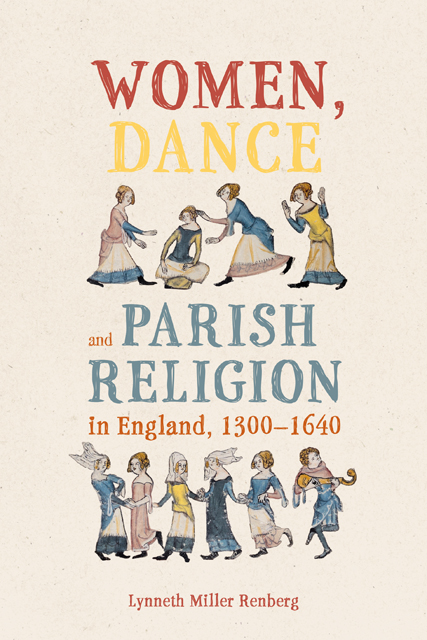Book contents
- Frontmatter
- Dedication
- Contents
- Acknowledgments
- List of Abbreviations
- Introduction
- 1 Reforming and Redefining True Religion
- 2 Dance and Protecting Sacred Space
- 3 Dance and Disrupting Sacred Time
- 4 “Satan Danced in the Person of the Damsel”
- 5 “In Her Dance She Had No Regard Unto God”
- 6 Performing Dance, Sin, and Gender
- Conclusions
- Appendix
- Timeline
- Bibliography
- Index
- Gender in the Middle Ages
Introduction
Published online by Cambridge University Press: 17 December 2022
- Frontmatter
- Dedication
- Contents
- Acknowledgments
- List of Abbreviations
- Introduction
- 1 Reforming and Redefining True Religion
- 2 Dance and Protecting Sacred Space
- 3 Dance and Disrupting Sacred Time
- 4 “Satan Danced in the Person of the Damsel”
- 5 “In Her Dance She Had No Regard Unto God”
- 6 Performing Dance, Sin, and Gender
- Conclusions
- Appendix
- Timeline
- Bibliography
- Index
- Gender in the Middle Ages
Summary
In the early thirteenth century, Stephen Langton, Archbishop of Canterbury (1206–1228), used the text of a dance song, “Bele Alis,” to begin a sermon in which he exhorted his audience to “dance to God” with “a sonorous voice, that is, holy preaching, pleasing both to God and to men; the entwining of arms, that is, a twofold charity, namely, the love of God and neighbor; and the stamping of feet, that is, works harmonizing with our preaching, in imitation of our Lord Jesus Christ, who undertook first to do good works, and then to teach.” The preacher utilized the dancing Alis in this sermon to represent the Virgin Mary and invoked Christ’s Davidic lineage to remind “the hearer of David’s dancing before the Lord.” In this medieval English sermon, dancers represented saints, and dancing exemplified true Christian living. In an era in which preaching was used to convey doctrine and proper behavior to the laity, such a message from the pulpit seems a powerful endorsement of the holiness of dance.
Indeed, medieval Christians did “dance to the Lord,” both allegorically and literally. Saints such as Elisabeth of Spalbeek were known for their dancing of the passion, while tales such as that of the Virgin’s jongleur indicate divine approval of dancing. In many churches throughout medieval Europe, Easter celebrations included a dance to the risen lamb. According to one fourteenth-century description, the Easter service began as the priests processed into the sanctuary, singing a song of praise to the risen lamb. Then the priests moved into the center of the cathedral and began an intricate dance on the cathedral’s maze-patterned flooring, dancing through the maze while tossing a ball from priest to priest, singing a round in which the melody bounced from singer to singer in tandem with the ball. And while ordinary laity could not participate in this dance of worship, they did dance, and often, as a part of their religious practice: at parish ales, at maidens’ lights, at saints’ feasts, and in processionals throughout their town. At these events, medieval parishioners danced not primarily in pairs, but in groups, performing Langton’s call to community arm in arm with their neighbors.
- Type
- Chapter
- Information
- Women, Dance and Parish Religion in England, 1300-1640Negotiating the Steps of Faith, pp. 1 - 18Publisher: Boydell & BrewerPrint publication year: 2022



